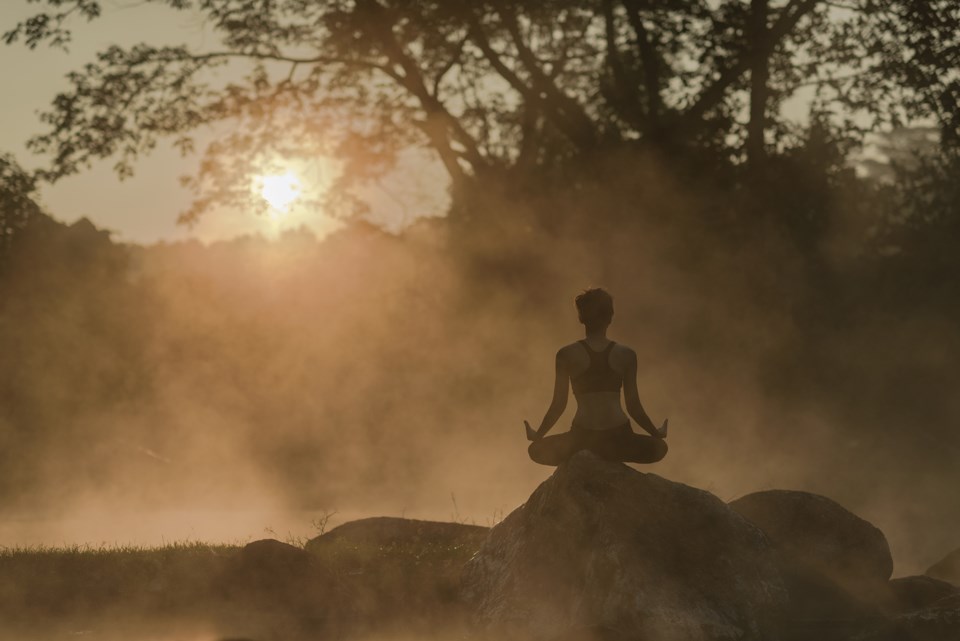The health and wellness column is venturing out into dangerous territory today, my friends. Those who love their HOT YOGA, really love their HOT YOGA. And if you are satisfied with your practice, stop reading. The purpose of this discussion is to highlight the erroneous claims being made by those selling HOT YOGA so you can make an informed decision about the product.
These are some common sales points regarding HOT YOGA and the evidence-based truth instead.
Warm muscles stretch better and allow you to go deeper in the poses. My question – is that healthy – to push the range of motion of our joints right to the limit and then hold it there? Muscles move bones. The connections between the muscles and the bones are tendons and connective tissue. The connections between bones are ligaments. The points of movement between the bones are your joints. The joints are where the connective tissue is concentrated. Most of the pain you experience is not muscle but the connective tissues mentioned above. This connective tissue has 10 times more nerves than the muscle fibres.
Connective tissue is not meant to stretch, but to stabilize. The artificially warm environment can create the “feeling” that stretching deeper is pleasant but in reality the heat is masking your normal warning signals that you are going too far.
A better practice to increase flexibility would be to work the muscles in a variety of ways (like yoga poses do anyway, quite brilliantly) and stop just short of your full range of motion. This avoids strain on the connective tissue but brings strength and resiliency to the muscle fibres.
Heat increases cardio. While it is true that warmer environments can cause you to burn more calories for normal metabolic processes, the research is very mixed. And each body varies widely as to how it reacts. It has more to do with enzymes and heredity than just entering a hot room. The fact that one sweats so much in HOT YOGA (lowering body temperature) shows that the body will work quite diligently to protect your energy and not burn calories unnecessarily. There is no demonstrated superior cardiovascular effect of HOT YOGA. The sweat is cause it’s hot.
Sweating is detoxifying. Your body has excretory functions (number one and two), sweating, tears and breathing as its main ways to eliminate toxins. Of these, exhaling is the most regular and available, so it gets first place as the most effective. Sweat does contain things which your body doesn’t want but needs to be cleaned off quickly, maybe within 10 minutes, or the skin will reabsorb the compounds.
Heat is relaxing. No argument on that point but are you exercising to boost metabolism or practising relaxation? These are two different goals. In a traditional yoga class, warmth is provided with blankets after the exercise component is finished (savasana).
This is how it’s done in India. India is a big country. There are tropical areas and snowy mountainous areas. The HOT YOGA poses have only started showing up in the last century or so and most were designed to keep young teenaged boys too tired to deviate from the spiritual disciplines that they had been born into. No middle-aged, menopausal gramma in India was ever traditionally whipped through sun salutations in 100-degree heat. And living and practising in tropical heat is much different than manufactured heat for short bursts.
There are several health conditions for which extreme heat is not suggested, perhaps even dangerous. Pregnancy, auto-immune conditions such as rheumatoid arthritis, MS, migraines, menopause or perimenopause, ligamental injuries (like SI joint pain, groin injuries or ACL strains), to name just a few.
Yoga does provide a wonderful fitness system of exercise but it should be offered in the context of a larger philosophy. Aggressive, extreme movements (which have become popularly associated with yoga lately) are a form of self-aggression. Yoga is a practice designed to lead to harmony, self-love and connection. Holding reverence for the physical vehicle that guides you in yoga practice should be a guiding principle. If you are heading to HOT YOGA because it will burn more calories or get you into fantastic shape faster, that’s not yoga anymore.



